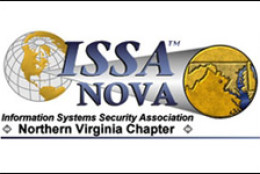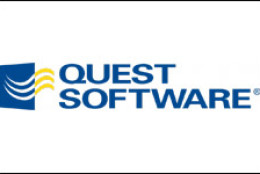National Institute of Standards and Technology
-
The departments of Commerce, Homeland Security and Treasury submitted suggestions to the White House on what incentives the government can offer to induce critical infrastructure providers to use the cybersecurity framework to improve their systems and networks. NIST is leading an effort to develop the framework with industry.
August 07, 2013 -
Alex Grohmann and John Dyson from the Northern Virginia Chapter of the Informations Systems Security Association, join host John Gilroy to talk about what you can do to make your agency more secure. July 9, 2013
July 08, 2013 -
Department will move away from DoD-specific approaches to cybersecurity, lean more toward informing and relying on governmentwide efforts.
July 08, 2013 -
DHS, DISA and GSA are heading down similar but different paths to ensure mobile apps are secure before being allowed on devices or networks. NIST is developing voluntary guidelines to improve mobile software security based on work done in other industry sectors.
June 26, 2013 -
In an effort to incorporate iris, facial and fingerprint recognition technologies across the government, the House Oversight and Government Reform Subcommittee pressed the National Institute of Standards and Technology to set a date for the release of national biometric recognition standards.
June 21, 2013 -
NIST, charged with developing the nation's first-ever cybersecurity baseline for critical infrastructure, says its job is to provide technical assistance to companies, but industry itself must lead the way. Gen. Keith Alexander said NSA will review the use of contractors.
June 13, 2013 -
Phillip Soloweszyk, director of Identity and Windows Consulting Services for Quest Software, will discuss identity management. APril 16, 2013
April 16, 2013 -
Collaboration and a better way to measure risk emerge as the two main factors in developing a more integrated approach to protecting critical infrastructure systems and networks. At the first of four workshops, NIST got the lowdown from owners and operators as well as information sharing centers on what's working and what needs to be at the forefront as the framework is developed.
April 04, 2013 -
Cyber coordinator Michael Daniel released updated goals for TIC, HSPD-12 and continuous monitoring on Performance.gov. He said by adding new goals to the portal, performance improvement officers will pay more attention and influence how agencies meet the targets.
March 15, 2013 -
The newly issued Executive Order gives NIST, DHS several goals and corresponding deadlines over the next year. NIST will work with industry to create a cybersecurity framework. DHS is expanding the information sharing program so industry can receive classified and unclassified cyber threat data more easily and more quickly.
February 14, 2013 -
Senior administration officials say the Executive Order is not a replacement for comprehensive cybersecurity legislation, but the start of a new conversation for how best to protect the nation's critical infrastructure. NIST released an RFI Tuesday as part of its effort to create a voluntary, flexible framework. And DHS will expand the number of companies the government shares classified and unclassified cyber threat information with through the Defense Industrial Base pilot.
February 13, 2013 -
Ron Ross of the National Institute of Standards and Technology wants feedback on the agency's IT security and privacy controls. Deputy Commissioner Wanda Rogers of the Treasury Department's Financial Management Service talks about the final transition to E-Payments. Philip Lohaus is a research fellow with the American Enterprise Institute and former Defense Department analyst who has studied and blogged about how the CIA is two organizations in one.
February 11, 2013 -
Through the Digital Government Strategy, several initiatives are underway to address IT security concerns. DHS created a security baseline architecture and is testing it through five use cases. GSA created a new secure online content platform for agencies to move websites and applications into a mobile environment.
February 08, 2013 -
The department is creating and trying out a universal curriculum for five foundational cyber roles in 2013. DISA is leading the effort and will add new roles next year as it refines the training. The agency says it is doing all it can to synchronize its training not just across DoD, but across the entire federal government in line with the National Initiative for Cybersecurity Education (NICE).
January 21, 2013 -
OMB and NIST are seeking help from industry and academia on how to integrate cloud computing and the large amount of information that is created from mobile computing. The goal is not just to know what data agencies have, but the value the data brings. With all this focus on cloud and big data integration, could agencies be on the hook for a new "big data" strategy?
January 16, 2013




